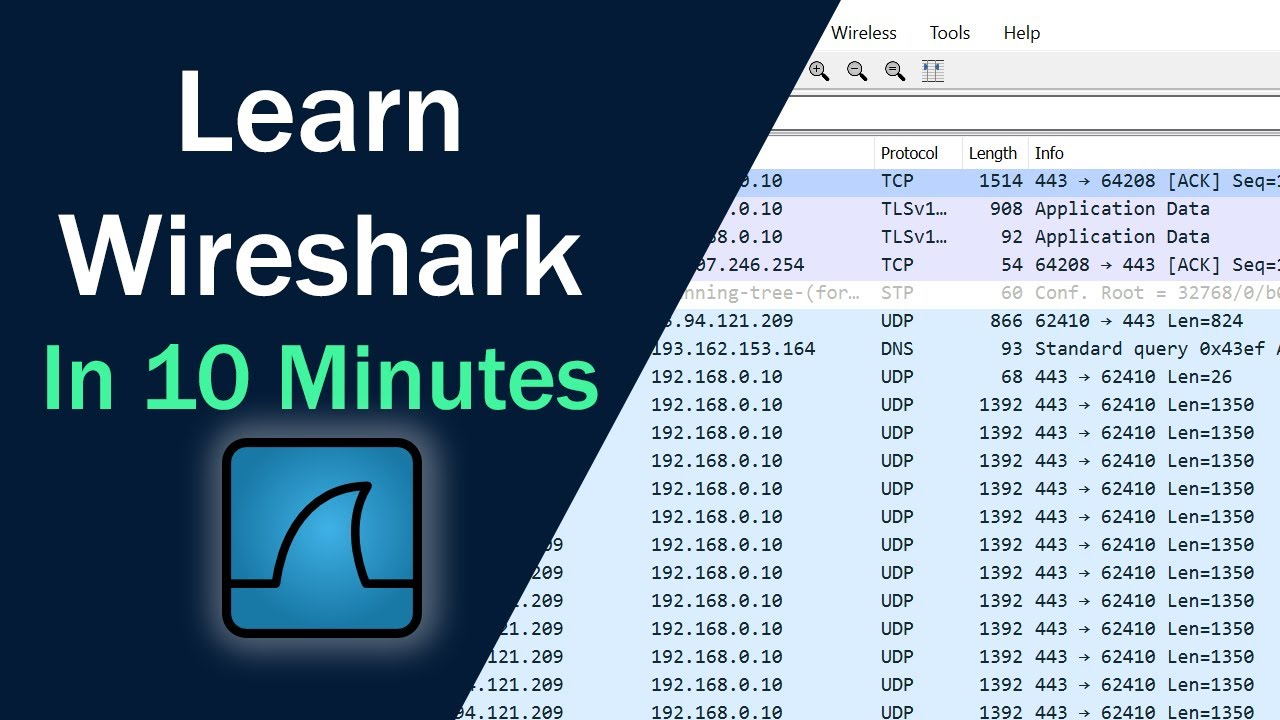Kali Linux: Hacking ARP
Summary
TLDRIn this tutorial, the video demonstrates how to poison ARP caches and implement a man-in-the-middle attack within a network using tools like Wireshark and Ettercap. The presenter explains the ARP protocol, shows how to manipulate ARP caches on Windows PCs, and intercept communications between devices. Through practical examples using EVE-NG and Kali Linux, the video captures login credentials and router configurations through clear text protocols like telnet and HTTP. The tutorial emphasizes the dangers of using unencrypted protocols and suggests security measures like dynamic ARP inspection to prevent such attacks.
Takeaways
- 😀 ARP (Address Resolution Protocol) is essential for mapping IP addresses to MAC addresses in Ethernet networks.
- 😀 ARP poisoning involves manipulating the ARP cache of a device to redirect traffic to an attacker’s machine.
- 😀 A man-in-the-middle (MITM) attack can be implemented after ARP poisoning, allowing the attacker to capture sensitive data between devices.
- 😀 Wireshark can be used to observe ARP requests and responses to understand how devices discover each other's MAC addresses.
- 😀 Ettercap is a tool that can be used for ARP poisoning, enabling the attacker to intercept traffic between devices.
- 😀 It’s essential to use encrypted protocols (e.g., SSH, HTTPS) rather than unencrypted ones like Telnet and HTTP to protect sensitive data.
- 😀 The attacker can capture login credentials and other sensitive information (such as router configurations) during a MITM attack.
- 😀 Clear text protocols like Telnet and HTTP can expose usernames, passwords, and configuration data to attackers.
- 😀 TFTP (Trivial File Transfer Protocol) can be used to back up a router’s configuration, and attackers can intercept this data to obtain sensitive router information.
- 😀 To protect against ARP poisoning and MITM attacks, dynamic ARP inspection should be enabled on switches to block unauthorized ARP replies.
- 😀 Always conduct penetration testing only on networks where you have explicit permission, and use virtualized environments like EVE-NG to safely practice network attacks.
Q & A
What is ARP (Address Resolution Protocol), and why is it important in networks?
-ARP is a fundamental protocol in networking that allows devices to discover the MAC addresses of other devices on the same local network. This is essential for data transmission on Ethernet networks, as the MAC address is used to identify devices at the data link layer.
What is ARP cache poisoning, and how is it used in the attack demonstrated in the video?
-ARP cache poisoning is the process of sending false ARP messages onto a network, causing a device to associate an incorrect MAC address with an IP address. This technique is used in the video to redirect traffic through the attacker's machine, enabling them to intercept and capture sensitive data.
What tool is used to poison the ARP cache in the video, and how does it work?
-The tool used for ARP cache poisoning in the video is Ettercap. Ettercap performs a man-in-the-middle attack by sending ARP spoofing messages to the target devices, causing them to update their ARP caches with incorrect MAC addresses that point to the attacker's machine.
What role does Wireshark play in this demonstration?
-Wireshark is used to capture and analyze network traffic. In this video, it is used to observe the ARP requests and responses, monitor the data being transmitted between the poisoned devices, and capture sensitive information like usernames and passwords.
Why is the use of Telnet and HTTP considered insecure, and how does the video demonstrate this insecurity?
-Telnet and HTTP transmit data, including usernames and passwords, in clear text without encryption, making them vulnerable to interception. The video demonstrates this by capturing Telnet and HTTP traffic in Wireshark, revealing the sensitive data being exchanged between the host and the router.
What is the significance of capturing the router's configuration using TFTP?
-Capturing the router's configuration using TFTP can expose sensitive information, such as passwords and network settings. The video shows how an attacker can intercept the TFTP traffic, allowing them to retrieve the router's configuration, including the enable password and other critical data.
What is the purpose of dynamic ARP inspection, and how does it prevent attacks like the one demonstrated in the video?
-Dynamic ARP inspection (DAI) is a security feature on network switches that prevents ARP poisoning attacks. It ensures that only legitimate ARP responses are accepted by the switch, thereby protecting against MITM attacks like ARP cache poisoning.
How does the Kali Linux machine function in this attack scenario?
-In this attack, the Kali Linux machine acts as the man-in-the-middle. It poisons the ARP caches of both the Windows host and the router, redirecting the traffic through itself. This allows the attacker to capture and analyze all the data exchanged between the two devices.
What is the purpose of using the 'follow TCP stream' option in Wireshark?
-The 'follow TCP stream' option in Wireshark allows users to view the entire conversation between two devices. It helps in isolating and inspecting specific sessions, like a Telnet or HTTP login, to capture sensitive information such as usernames and passwords.
What troubleshooting hint is provided for Kali Linux users experiencing traffic forwarding issues?
-The video provides a troubleshooting hint for Kali Linux users experiencing traffic forwarding issues: they should use the command 'echo 1 > /proc/sys/net/ipv4/ip_forward' to enable IP forwarding, allowing Kali to forward traffic between devices as part of the MITM attack.
Outlines

This section is available to paid users only. Please upgrade to access this part.
Upgrade NowMindmap

This section is available to paid users only. Please upgrade to access this part.
Upgrade NowKeywords

This section is available to paid users only. Please upgrade to access this part.
Upgrade NowHighlights

This section is available to paid users only. Please upgrade to access this part.
Upgrade NowTranscripts

This section is available to paid users only. Please upgrade to access this part.
Upgrade NowBrowse More Related Video
5.0 / 5 (0 votes)





